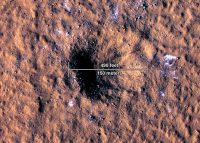The planet is located in the constellation Auriga, about 580 light-years from Earth. Astronomers say the unusually fluffy planet orbits its host star every three and a half days. At just 0.27 grams per cubic centimeter, it’s less than half the size of Saturn, the “thinest” gas giant in the solar system, and its average density is close to that of a marshmallow.
According to current theories, large gaseous planets like Jupiter and Saturn form when accretion disks around young stars contain enough material. Red dwarfs are relatively small and low in size and temperature among many stars in the main sequence, but they are so active that they can emit powerful flares that can strip a planet’s atmosphere and even scorch it. And this “marshmallow” planet is similar in size to Jupiter, which is rare for a red dwarf star.
Scientists believe that the planet’s rocky core forms more slowly than other gas giants due to the lack of heavy elements, which delays the accumulation of gas particles and keeps the planet’s overall density low. Astronomers hope further research will shed light on how and why this unusual exoplanet got what it is. In addition, the team hopes to look for other gas giant planets around red dwarf stars to learn more about planet formation around such stars.




GIPHY App Key not set. Please check settings